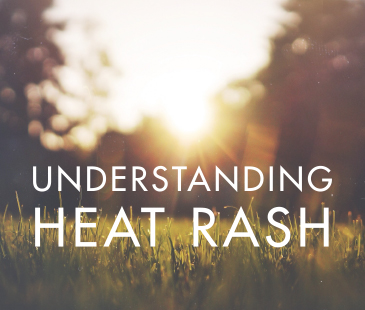Understanding Heat Rash

Also known as miliaria, heat rash affects us all in hot, humid weather. This time of year, it is one of the most talked about skin conditions that we see at Skin Wellness Dermatology of Alabama. So what makes those the little blisters and bumps pop up at the end of a day in the sun? Occluded sweat glands.
When our pores get blocked or full, perspiration is trapped under the skin. Instead of evaporating, perspiration causes inflammation and rash. This can happen from wearing tight, non-breathable fabrics in the sun; from sweating profusely; or from applying thick, heavy moisturizers or sunscreens. Friction will make it worse. Adults often find heat rash in folds of skin and in places where clothing rubs on perspiring skin.
An infant’s sweat ducts are not fully developed, which means they are particularly susceptible to heat rash. In infants, heat rash is found most often in the neck, shoulders, armpits and creases of the elbow.
We advise our patients that heat rash will typically clear up on its own. More severe symptoms may benefit from topical treatments or steroids. If your heat rash occurs in a deeper level of the skin, it will feel prickly or itchy. Sometimes called “prickly heat,” it should still subside within a few days.
If your symptoms persist or include increased pain and swelling, fever, or swollen lymph nodes, we recommend you make an appointment to see a physician. This could be folliculitis, which involves bacteria and hair follicles and will need treatment to prevent staph build-up.